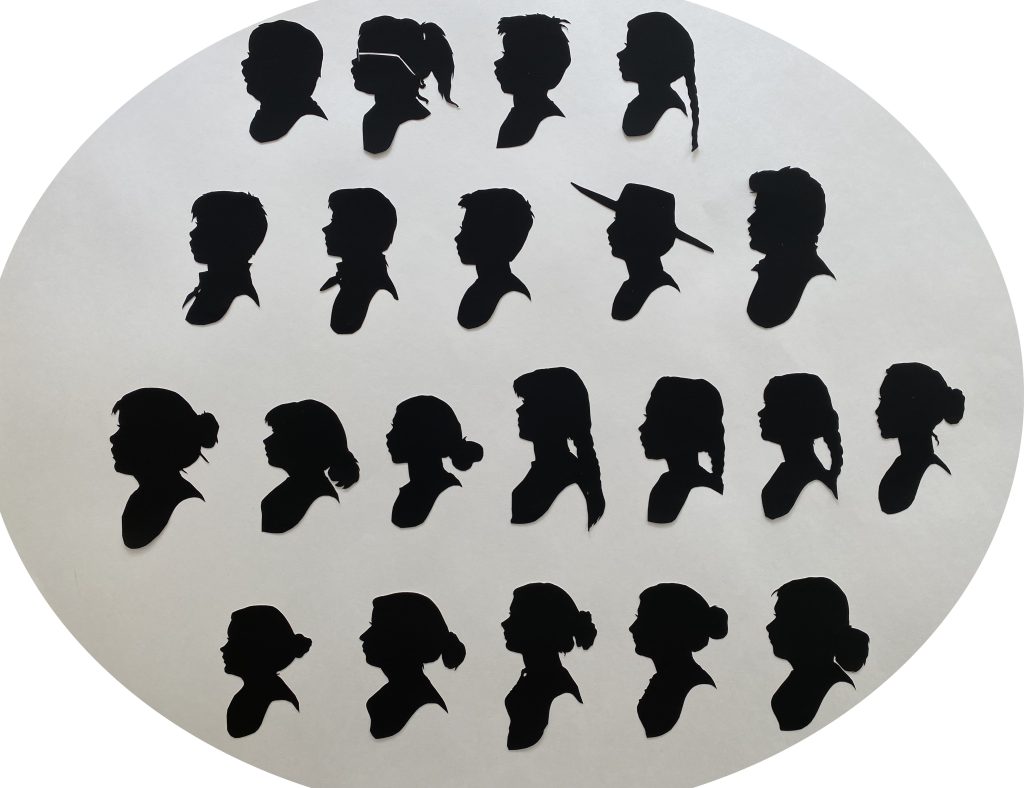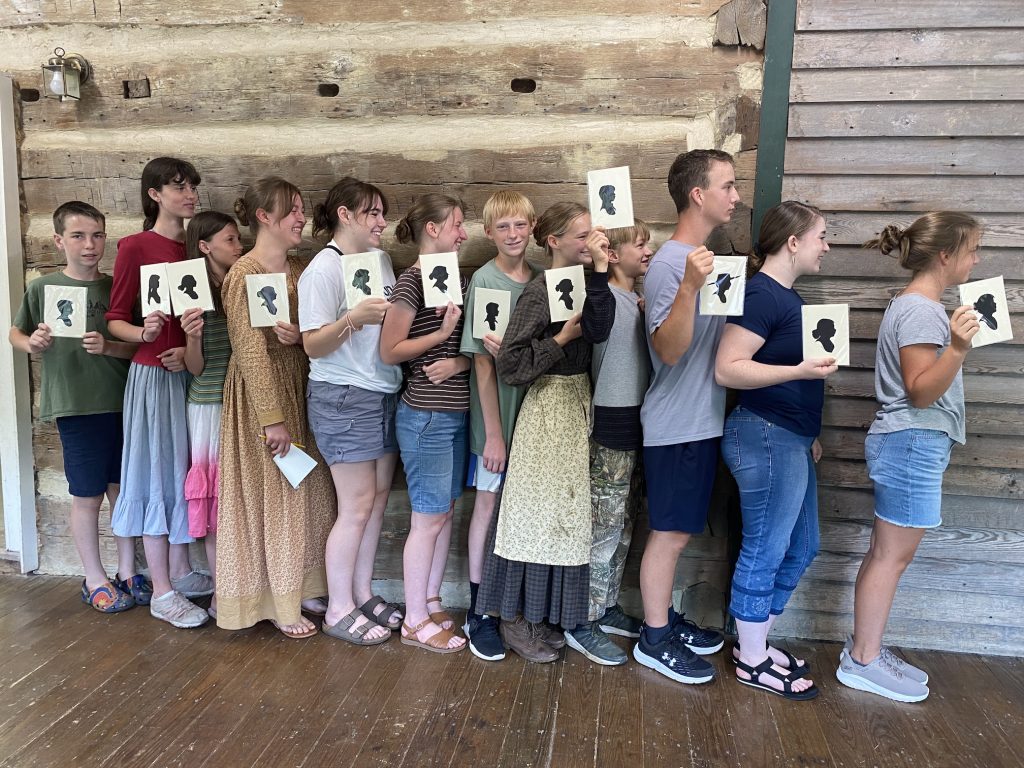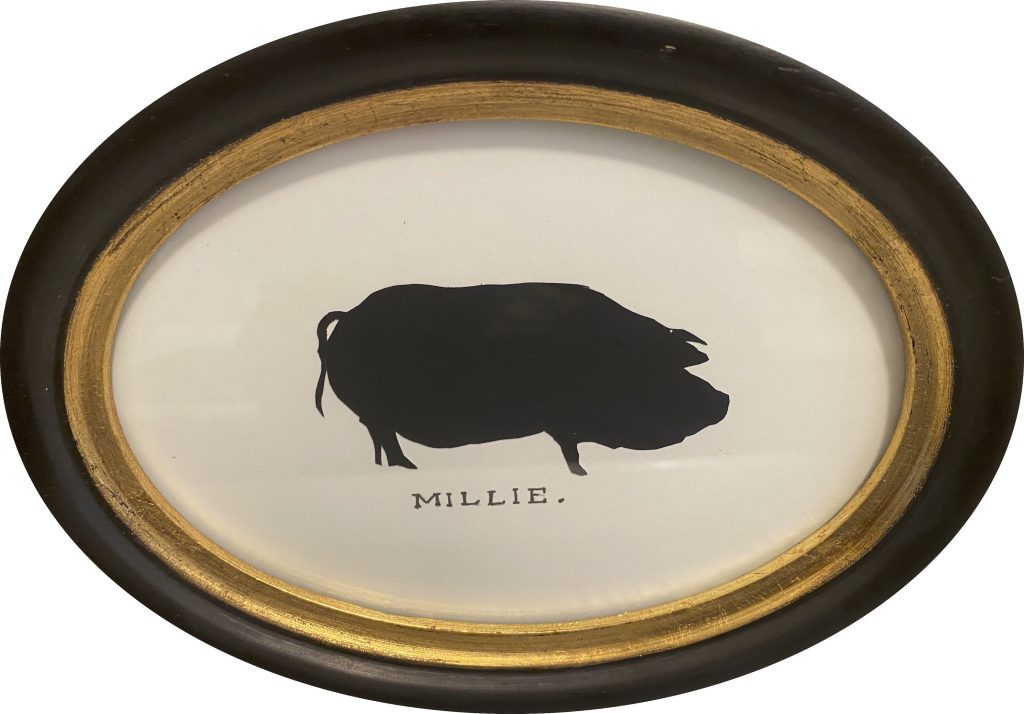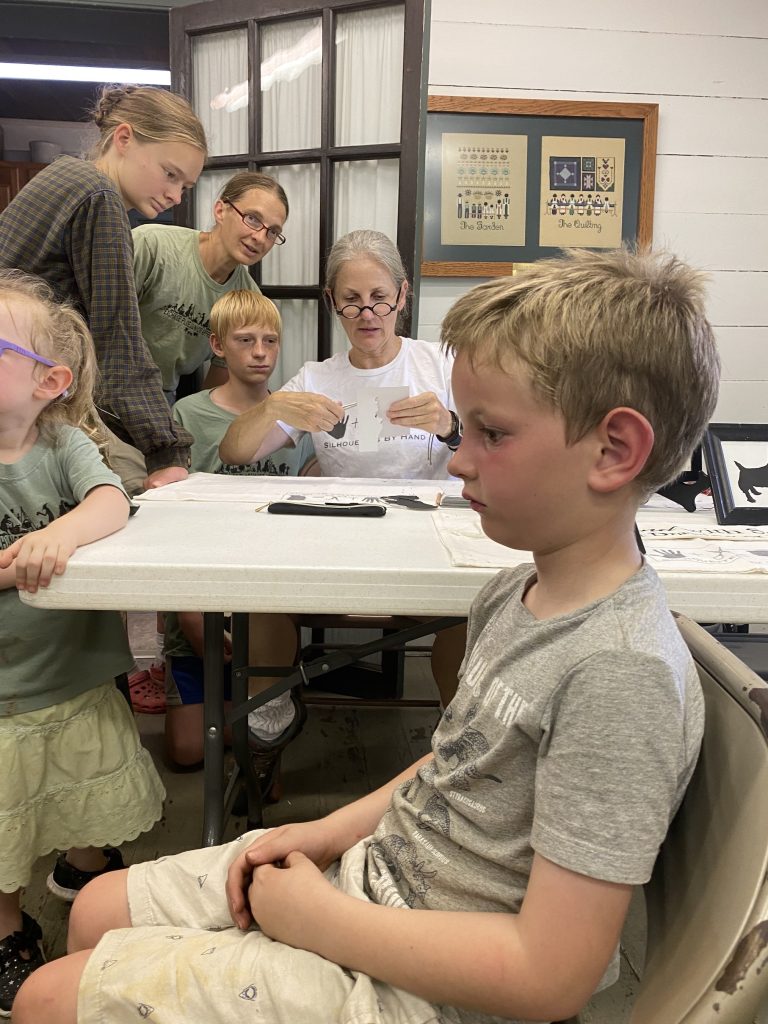
In today’s digital age, we are very acquainted with our faces. Cellphones, selfie-sticks, and social media platforms all facilitate the creation and preservation of permanent images of our likenesses, some of which end up being shared with the world and others sent to the cyber trashcan.
For those living in early America, though, a permanent record of one’s visage was quite rare—and certainly not something to be deleted or discarded on a whim. Only people of means could afford such a luxury. If you were wealthy, you would likely commission a painted portrait of yourself, which would inevitably be left in your will to a most deserving heir. If you were of the middle or “middling” class, you might opt instead for a silhouette to preserve your image. Often crafted by itinerate artists, silhouettes were profile likenesses cut from black paper. They were quick to produce and much more affordable than formal painted portraits.
In July, the Junior Apprentices were treated to a workshop on the historic craft of silhouette cutting by artist Lauren Muney of Baltimore, MD (silhouettesbyhand.com). One of only a handful of artisans who cut silhouettes freehand (without drawing, tracing, or casting shadows), Muney has demonstrated her skill all over the world and has designed numerous projects and exhibits for museums and historic sites. Funded by a grant from Humanities Tennessee, Muney’s workshop at Exchange Place aimed to connect the JAs not only with an early American art form but also foster an understanding of the social fabric of the late 18th and early 19th centuries.
Muney, who taught herself how to cut silhouettes through meticulous research and focused practice, explained to the JAs that the key to success with the craft is understanding how to interpret shapes, spaces, and angles. She then gave a lesson on physiognomy, or judgement of one’s character by facial features. This pseudo-science, which dates back to the ancient Greeks, was highly influential in the 18th and 19th centuries and could lead to serious consequences, even jail time for people who were deemed to have “criminal” faces.
Muney produced a board on which several plaster noses were displayed. With this prompt, she explained that according to the tenants of physiognomy, an upturned nose indicated an impetuous and impulsive nature, while a long, downward pointing nose suggested deliberateness, even selfishness. Arched nose? No doubt a creative soul. Scooped nose? Very emotional. The judgement could expand based on other features such as eyes, eyebrows, forehead, ears, mouth, and chin.
After getting “schooled” in the tenets of physiognomy, the JAs paired up and attempted to read each others’ faces using the criteria Muney had explained. Giggles and gasps ensued as they closely examined their features. While a fun exercise, the activity also illuminated inherent flaws in the theory, which does not take into account genetics or modern medical treatments like orthodontics. The JAs finally determined that the old adage “you can’t judge a book by its cover” is true—yet they also understood how easy it is to judge by appearance, even today.
After the physiognomy exercise, it was time for the silhouette cutting. Each participant sat patiently as Muney examined their profile and snipped away with a pair of short-bladed surgical scissors. After a minute or so, Muney held up a remarkably accurate likeness of the sitter. Muney even made silhouettes of younger siblings of the JAs as well as Exchange Place’s beloved American Guinea Hog sow “Millie.”
In the end, the JAs left with a historically-inspired memento of the occasion—a one-of-a-kind silhouette portrait—as well as a deeper understanding of history and human nature. And they for sure will never look at their faces quite the same way again!



The mission of Exchange Place Living History Farm is to preserve and interpret the heritage of mid-19th century farm life in Northeast Tennessee. A private, non-profit organization, Exchange Place is maintained and operated primarily by volunteers and is supported by donations, fundraisers, memberships, and grants.

Exchange Place
4812 Orebank Rd,
Kingsport, TN 37664
423-288-6071